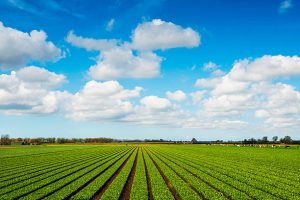Growing Lettuce with Regenerative Methods in West Lancashire, UK
 Welcome to our guide on growing lettuce using regenerative methods in the fertile soils of West Lancashire. In this article, we’ll explore sustainable practices for cultivating lettuce while enhancing soil health, reducing environmental impact, and maximizing yields through regenerative agriculture techniques.
Welcome to our guide on growing lettuce using regenerative methods in the fertile soils of West Lancashire. In this article, we’ll explore sustainable practices for cultivating lettuce while enhancing soil health, reducing environmental impact, and maximizing yields through regenerative agriculture techniques.
Regenerative Practices for Lettuce Cultivation:
1. Cover Cropping: Incorporate cover crops such as clover, rye, or vetch between lettuce crops to protect the soil, suppress weeds, and add organic matter. Cover crops also improve soil structure and fertility, contributing to long-term soil health.
2. Reduced Tillage: Minimize soil disturbance by reducing tillage passes between lettuce plantings. Less tillage helps preserve soil structure, microbial communities, and soil organic matter, promoting soil health and carbon sequestration.
3. Crop Rotation: Rotate lettuce with other crops to break pest and disease cycles, improve soil fertility, and maintain ecosystem balance. Diverse crop rotations enhance biodiversity and soil resilience while reducing reliance on chemical inputs.
4. Mulching: Keep the soil covered with organic mulch, such as straw or compost, to conserve moisture, suppress weeds, and regulate soil temperature. Mulching also promotes microbial activity and soil organic matter decomposition.
5. Companion Planting: Integrate companion plants such as herbs or flowers to attract beneficial insects, deter pests, and enhance ecosystem diversity. Companion planting supports natural pest control and pollination while maximizing space utilization.
Benefits of Regenerative Lettuce Cultivation:
– Improved Soil Health: Regenerative practices enhance soil structure, fertility, and microbial activity, resulting in healthier and more resilient soils.
– Reduced Environmental Impact: By minimizing tillage, chemical inputs, and soil erosion, regenerative lettuce cultivation reduces environmental pollution and promotes ecosystem conservation.
– Enhanced Biodiversity: Cover cropping, crop rotation, and companion planting increase biodiversity on the farm, supporting beneficial insects, pollinators, and wildlife.
– Sustainable Yields: Regenerative agriculture techniques optimize soil health and crop resilience, leading to sustainable lettuce yields and long-term farm viability.
Growing Lettuce in West Lancashire:
The mild maritime climate of West Lancashire provides favourable conditions for lettuce cultivation. With ample rainfall and moderate temperatures, lettuce thrive in the region’s fertile soils, producing high-quality, flavourful summer salad greens.
By incorporating regenerative methods like cover cropping, reduced tillage, and companion planting, lettuce growers in West Lancashire can sustainably produce nutritious greens while enhancing soil health and protecting the environment for future generations.
Conclusion:
Join us in cultivating lettuce with regenerative methods in West Lancashire, where every crop is grown with care for the land and respect for nature. Experience the benefits of regenerative agriculture first hand as you enjoy fresh, nutrient dense lettuce grown sustainably in the heart of Lancashire.